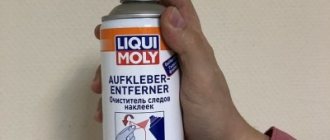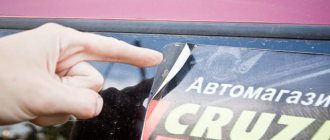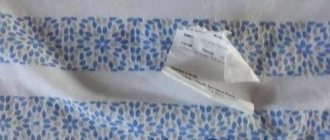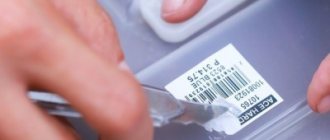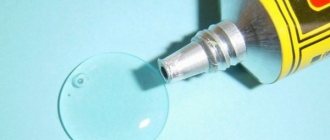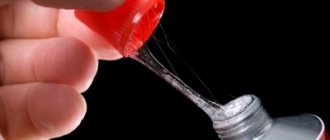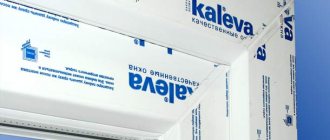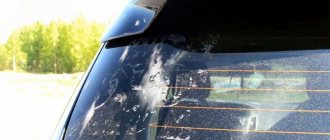We are all used to this shopping ritual when we purchase new clothes - be sure to cut off all the labels, inspect and remove all price tags from the clothes. Where would we be without this, right?
But bad luck! When you remove the size label from a new blouse or T-shirt, there will invariably be a sticky, unpleasant residue of glue left on the fabric, attracting lint, dust and dirt. Over time it will definitely look untidy!
The most effective ways to remove residue, including nail polish remover, can ruin your new clothes. So this is not an option! Instead of making the problem worse, try one of these simple and effective ways to remove that nasty sticker adhesive...
Special means
In a situation where traditional methods have proven to be ineffective in the fight against sticky marks from stickers, special means will come to the rescue.
TOP 3 most effective drugs:
Liqui Moly Sticker Mark Remover is a universal product that helps you quickly deal with sticker marks on any surface.
Directions for use: spray on the stain and leave for five minutes, after removing a particle of glue with a damp sponge. The average cost is 570 rubles.- Prosept tape and sticker cleaner is an aerosol that helps get rid of sticker marks in a matter of minutes). Directions for use: spray the mixture onto the sticky mark, wait two minutes, wipe the surface with a damp cloth. The average cost of Prosept aerosol is 270 rubles.
- Anti-adhesive sticker remover is a universal means of dealing with sticky glue stains on any surface. Directions for use: Spray the aerosol onto the stain and leave for three minutes. Afterwards, the sticky mark can be easily removed with a rubber spatula. The average cost of Antiscotch is 160 rubles.
Before using a special chemical, you must carefully study the instructions for use.
Stickers on cars and household appliances
To remove traces of labels or tape from a car, use special car cleaners. Alternatively, you can warm up the machine panel with a hairdryer and carefully scrape off the label.
By the way, at gas stations, stickers are removed using a hair dryer. Another option is to use steam or boiling water to heat the problem area of the metal, after which the adhesive composition will melt and it will be easy to remove marks.
Traces of adhesive tape on a refrigerator, stove, washing machine, microwave or other household appliances can be removed using vegetable oil, a hair dryer, a school eraser or special cleaning products. By the way, you can stick another one on top of the tape and tear it off sharply. Then the old tape will come off along with the old one.
To clean household appliances, use methods for plastic products, since plastic is mainly used in the manufacture of these items. A regular soap solution is perfect for washing.
How to remove an old label and remove traces of glue from plastic
If the label has remained on the plastic for a long time, easy methods will not help. In this case, you need to use more concentrated products. White spirit works great. Mix the solvent with water.
Use only a weak solution to avoid damaging the plastic coating. Soak a cotton pad in the resulting mixture and soak the adhesive base. Wait ten minutes and wipe the product with a damp cloth or napkin.
The special product WD 40 will help to effectively remove stickers from plastic products. This composition quickly penetrates and loosens the adhesive composition, disinfects and cleans. Typically, WD 40 is used to lubricate locks and various mechanisms, as well as to remove rust.
By the way, read how to remove rust at home here. However, the product is also suitable for removing labels from plastic.
WD 40 aerosol is sprayed at a distance of ten centimeters from the surface of plastic products and left for ten minutes, then remove the residue with a damp cloth.
Useful tips
When choosing a product for cleaning adhesive fragments, you need to consider what material the contaminants will be removed from and what items are being processed. Before you wash the sticker off your electronics, it is advisable to turn off the power; if it is a mobile phone, turn it off. When cleaning electrical appliances, do not abuse liquids - water, oil, etc. Using aggressive means, carry out a preliminary test on an inconspicuous area.
We wash off the adhesive tape from the windows - video:
Source
What not to do
Labels and adhesive residues should not be removed with a knife: its sharp blade may damage or scratch the surface. It is better to avoid abrasive products with coarse particles. After using them, scratches often remain.
You can heat the glue on glass and mirrors under one condition: the hair dryer should blow warm, but not hot air. If heated unevenly, the surface may burst.
Do not use solvents on painted surfaces. Acetone and kerosene can ruin plastic and leave stains on colored clothing. It is not recommended to remove glue from paper using liquid products. Oil should not be applied to solid wood as it will be absorbed and leave behind stains.
How to remove stickers from different surfaces?
Today you can hardly find a household appliance or other item that is sold in a store without stickers, sticky price tags and advertisements. In addition, there are special protective films. Beautiful, bright and modern! However, it is simply impossible to remove such delights from the surface of an object. Happened? Look at the place where it was glued. There you will definitely see a trace left from the adhesive base. Then you need to know what and how to properly remove stickers from different surfaces without damaging the item.
If the clothes are white, use tape
If the glue is not very ingrained or part of the sticker remains on the clothing, it is recommended to remove it with stationery tape. The main thing is that the fabric is not delicate! Otherwise, it will stretch and be ugly.
Using tape on white fabric is easy:
This option does not work for every sticker/glue, but it is gentle on most fabrics.
Freeze the glue
photo: unsplash. com/Dev Benjamin
To remove sticker residue from synthetic fabrics, place the item in the freezer for 45-90 minutes. Freezing clothes is especially helpful when stubborn pieces of sticker remain on the fabric.
Once frozen, they will harden enough that you can scrape them off with your fingernail or the back (dull) side of a knife.
Wet the sticky area and apply dish soap to the remaining adhesive. Scrub with a soft brush and then wash as usual. The glue will be completely erased!
On many products you can find barcode labels or price tags that are stuck on the most inappropriate places. Stickers spoil the appearance of the purchase, but they are not so easy to remove, since the labels leave behind an unpleasant sticky residue. Therefore, the owners of things strive to remove the glue from the price tag from a book or other products.
How to remove sticky residue from a sticker
Many things and goods, including books, household and electronic appliances, dishes, cars, have a manufacturer's label or barcode, and sometimes a price tag. Often these stickers are located in the most inappropriate places and spoil the appearance of the products.
You cannot use products designed to clean one material on another, otherwise you will ruin the thing! Next, we will learn how to remove stickers from various products. And let's look at how to remove traces of glue and paper from the surface of objects.
Essential oils, especially eucalyptus and tea tree oils, remove stickers and eliminate sticky residue from glass, tiles and ceramics. How to wash ceramic products, read the article about the rules for caring for ceramic tiles and porcelain stoneware.
Place a few drops of oil on a clean, dry cloth and wipe the dirty area. Then rinse the products with a composition for cleaning mirrors and glass, and finally wipe dry.
Vinegar and gasoline are only suitable for glass items. Apply a little of the selected product to a cotton pad, treat the surface and then remove the remaining label with a knife or other sharp object. Then wash the area with a damp cloth and wipe dry.
After the procedure, thoroughly wipe the surface with a solution for washing windows, glass and mirrors. Do not use brushes, rough or hard sponges to avoid scratching and damaging the glass. It is not recommended to use motor gasoline as it leaves streaks. Take a gasoline lighter.
For plastic utensils, you can use methods to clean plastic products. Essential oils are suitable for ceramic dishes; baking soda is suitable for porcelain and other types of materials.
In the latter case, a glass of soda is dissolved in a saucepan with hot water, where the product is lowered and left for half an hour. As a result, the label will fall off on its own. Remember that dishes with a label or sticker cannot be washed in the dishwasher!
Five ways to remove a label from a book
- Take the tape, stick it to the label and carefully tear it off. Repeat the procedure with new tape until the sticker comes off completely;
- Iron the book through a thick fabric or warm it with hot air from a hairdryer. After this treatment, the adhesive composition will melt, and the base can be easily removed with a soft brush or cloth. You can also hold the book over boiling water;
- For a glossy cover, use alcohol, acetone or white alcohol. The solvent is applied to a cotton pad and the sticker is removed from the surface;
- Rub flour, starch, baby powder, laundry detergent or other non-abrasive dry crumbly product into the remaining glue;
- The remains of the label with a matte cover are removed with a school eraser.
Recommendations
General rules and tips for removing stains from stickers will help you carry out the work efficiently and quickly:
When cleaning the surface of household appliances, it is necessary to follow safety rules for working with electrical equipment. So, you can only apply any products to a switched off device.- When using acetone, solvents and other chemical solutions with a very pungent odor for cleaning, it is necessary to ensure a flow of fresh air in the room (for example, open a window).
It is also necessary to ensure that flammable materials are not located near open flame sources.

